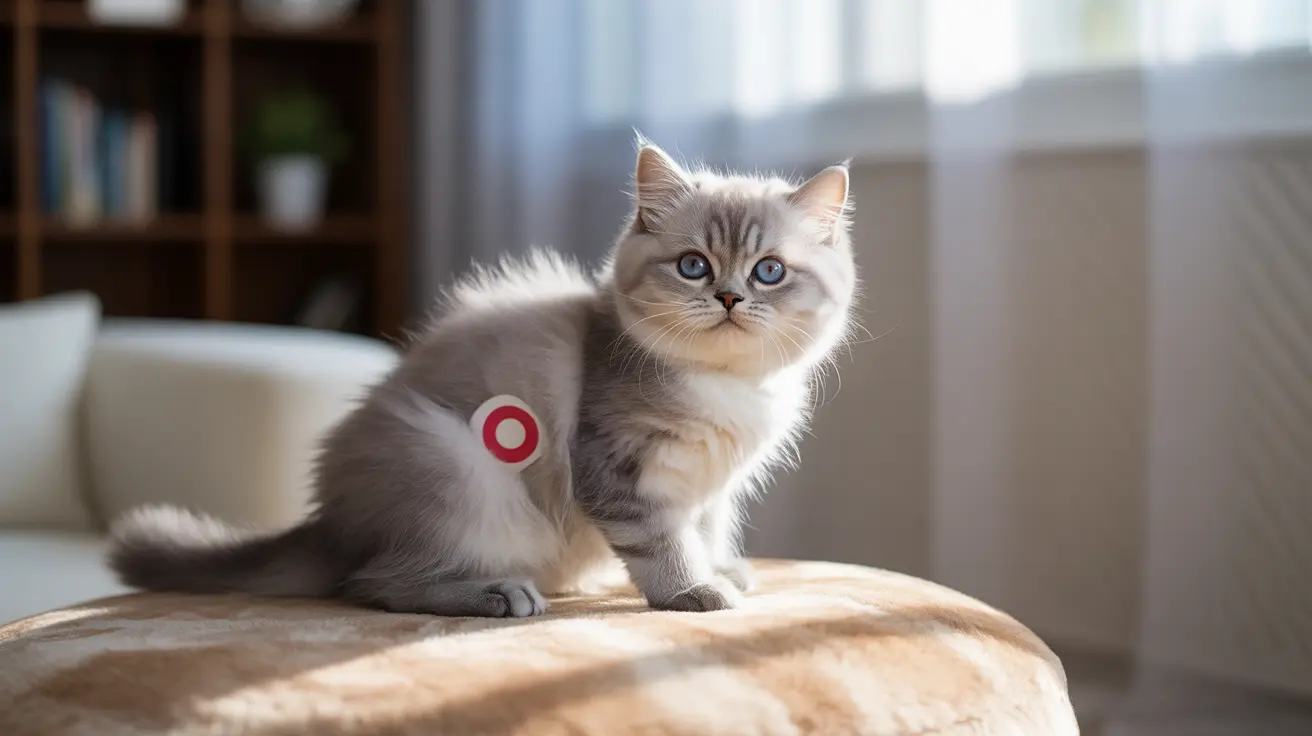If you've noticed a red bald spot on your cat, you're likely concerned about your feline friend's health. These concerning patches can appear for various reasons, from common parasitic infections to more complex medical conditions. Understanding the root cause is crucial for effective treatment and your cat's comfort.
In this comprehensive guide, we'll explore the main causes of red bald spots in cats, how to identify them, and what steps you should take to help your pet recover. We'll also discuss when these symptoms warrant immediate veterinary attention.
Common Causes of Red Bald Spots in Cats
Parasitic Infections
Fleas and mites are leading causes of red bald spots in cats. Flea allergy dermatitis (FAD) is particularly common, causing intense itching and hair loss, especially around the base of the tail and lower back. Even a single flea bite can trigger severe reactions in sensitive cats.
Mange mites can also create red, irritated patches of skin with significant hair loss. These parasitic infections are highly contagious and require prompt treatment to prevent spread to other pets.
Allergic Reactions
Food and environmental allergies frequently cause cats to develop red bald spots. Common triggers include:
- Certain protein sources in food
- Pollen or dust
- Cleaning products
- Synthetic materials in bedding
Allergic reactions often manifest as patches of hair loss accompanied by redness and inflammation, particularly around the head and neck area.
Behavioral and Stress-Related Hair Loss
Psychogenic alopecia, or stress-induced overgrooming, can create red bald spots in cats. This condition occurs when cats excessively groom due to anxiety, often triggered by:
- Changes in routine or environment
- New pets or family members
- Moving to a new home
- Separation anxiety
Medical Conditions That Cause Red Bald Spots
Infections
Bacterial and fungal infections, including ringworm, can cause circular bald patches with red, inflamed edges. These conditions often require specific medical treatments and can be contagious to both humans and other pets.
Hormonal Imbalances
Endocrine disorders like hyperthyroidism can lead to patchy hair loss with skin inflammation. These conditions typically require long-term management under veterinary supervision.
Treatment Options and Recovery
Treatment for red bald spots depends on the underlying cause but may include:
- Prescription flea and mite medications
- Antifungal or antibiotic treatments
- Allergy medications or dietary changes
- Stress reduction techniques
- Environmental modifications
Most cats will regrow hair once the primary condition is properly treated, though complete recovery may take several weeks to months.
Prevention Tips
To help prevent red bald spots from developing:
- Maintain regular flea prevention
- Schedule routine veterinary check-ups
- Monitor your cat's grooming habits
- Reduce environmental stress
- Keep living areas clean and allergen-free
Frequently Asked Questions
What are the most common causes of a red bald spot on my cat's skin?
The most common causes include flea allergy dermatitis, mite infestations, allergic reactions, fungal infections like ringworm, and stress-related overgrooming.
How can I tell if my cat's red bald spot is caused by fleas or an allergy?
Flea-related spots typically appear near the tail base and lower back, often with visible flea dirt. Allergy-related spots may appear anywhere but are common around the head and neck. A veterinary examination can confirm the exact cause.
When should I take my cat to the vet for treatment of red bald spots or hair loss?
Seek veterinary care if the bald spot is accompanied by intense redness, swelling, scabs, or if your cat appears uncomfortable. Immediate attention is needed if the condition spreads rapidly or multiple spots appear.
What are the effective treatments to get rid of fleas and heal red bald spots on cats?
Effective treatments include prescription-strength flea medications, environmental cleaning, and treating all pets in the household. Additional medications may be needed to heal the skin and reduce inflammation.
Can stress or anxiety cause my cat to develop red bald patches and how can I help?
Yes, stress can lead to compulsive overgrooming and red bald patches. Help by maintaining routine, providing environmental enrichment, using pheromone diffusers, and consulting with your vet about anxiety management strategies.
Remember, while red bald spots are concerning, most causes are treatable with proper veterinary care. Early intervention typically leads to the best outcomes for your feline companion.






